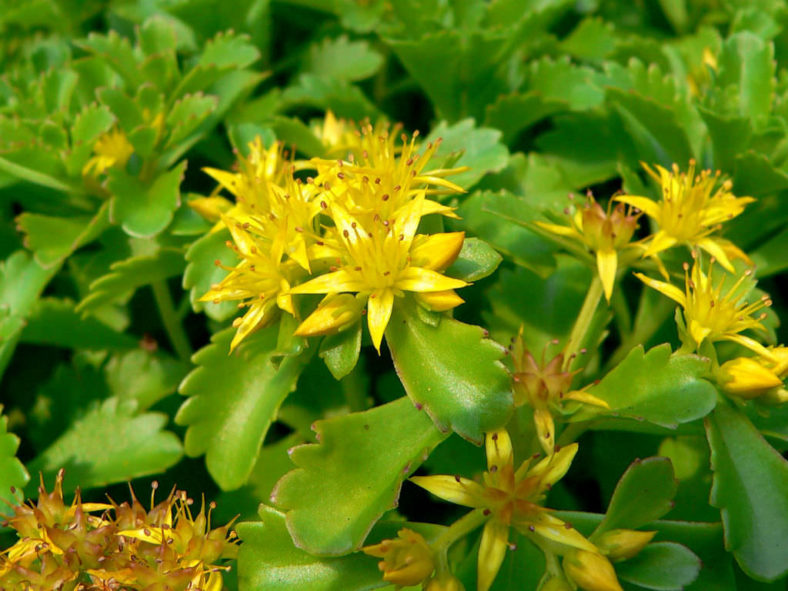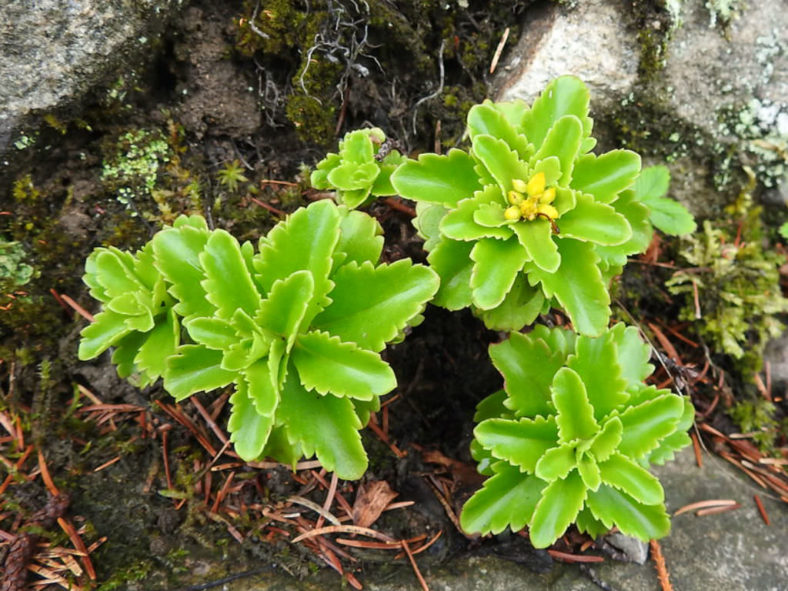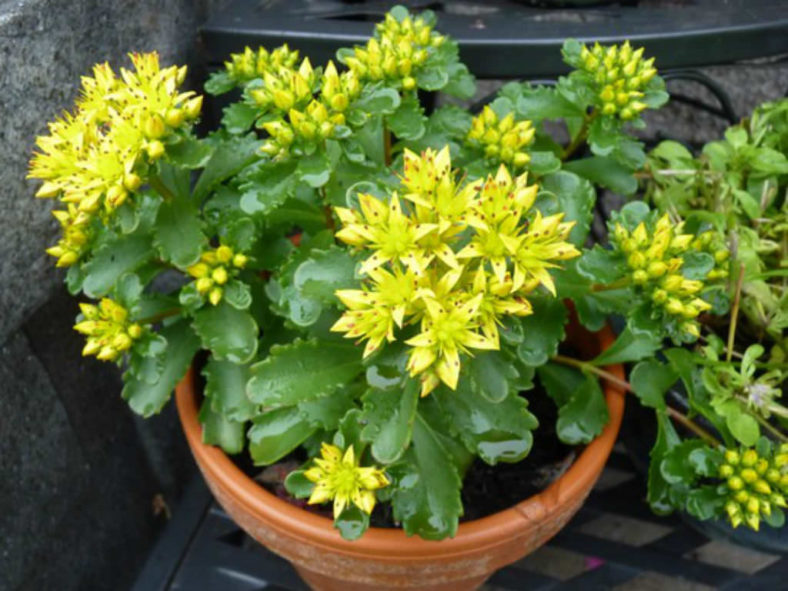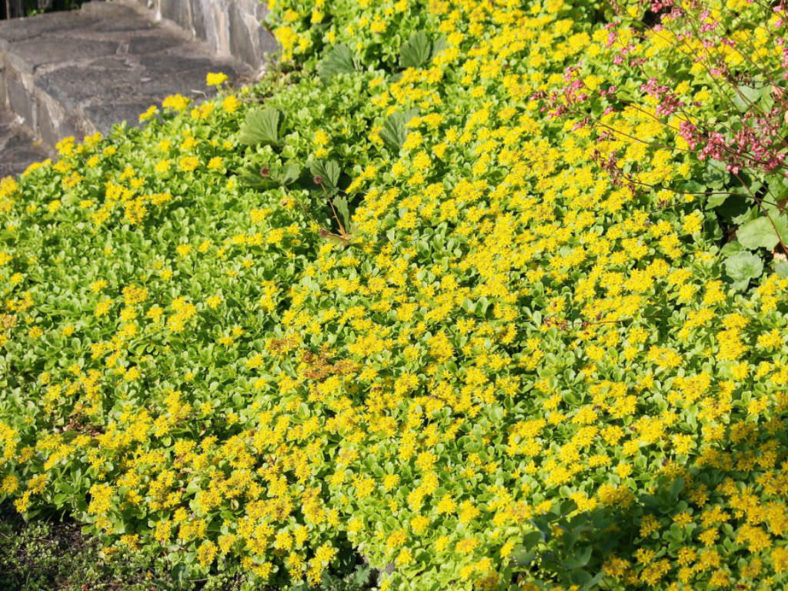Scientific Name
Phedimus kamtschaticus (Fisch. & C. A. Mey.) H. 't Hart
Common Name(s)
Kamschatca Sedum, Kamschatca Stonecrop, Orange Stonecrop, Russian Stonecrop
Synonym(s)
Aizopsis kamtschatica, Sedum aizoon subsp. kamtschaticum, Sedum kamtschaticum
Scientific Classification
Family: Crassulaceae
Subfamily: Sempervivoideae
Tribe: Umbiliceae
Genus: Phedimus
Etymology
The specific epithet "kamtschaticus (kam-SHAY-ti-kus)" refers to the Kamchatka Peninsula in eastern Russia.
Origin
Phedimus kamtschaticus is native to Russia (along the Pacific coast of Siberia, including the Kamchatka Peninsula) and North, East, and Central China, Japan, and Korea.
Description
Phedimus kamtschaticus, formerly known as Sedum kamtschaticum, is an attractive, low-growing succulent that forms a mat of thick, fleshy, rich green leaves on numerous spreading-ascending stems. It is a very variable species that can grow up to 6 inches (15 cm) tall and spread up to 18 inches (45 cm) wide by short woody rhizomes. The leaves are about 2 inches (5 cm) long and usually with serrated edges. Most of the foliage disappears in the cold winter months.
The flowers are star-shaped, bright yellow with orange anthers, and appear in clusters in summer.

How to Grow and Care for Phedimus kamtschaticus
Light: These light-loving plants will tolerate light or partial shade but prefer full sun and grow best in warmer environments.
Soil: Phedimus thrive in any well-drained soil. Good drainage is critical for preventing root rot or fungal diseases.
Hardiness: Phedimus kamtschaticus can withstand temperatures as low as -30 to 30 °F (-34.4 to -1.1 °C), USDA hardiness zones 4a to 9b.
Watering: The best way to water your Phedimus is to use the "soak and dry" method. Get the soil completely wet, and then wait until the soil is dry before watering again.
Fertilizing: Feed with low-balanced fertilizer to keep your plants happy and healthy. Use a diluted dose of half the strength recommended on the package.
Repotting: Repot your plants when they outgrow their current pot by moving them to a larger container to hold the plant better.
Propagation: Phedimus can be grown from seeds, division, or stem cuttings.
Learn more at How to Grow and Care for Phedimus.
Toxicity of Phedimus kamtschaticus
Phedimus plants can be mildly toxic to humans and animals.
Varieties, Forms and Cultivars of Phedimus kamtschaticus
- Phedimus kamtschaticus var. floriferum
- Phedimus kamtschaticus var. floriferum 'Weihenstephaner Gold'
- Phedimus kamtschaticus 'Golden Carpet'
- Phedimus kamtschaticus 'Variegatum'
- Phedimus takesimensis
Links
- Back to genus Phedimus
- Succupedia: Browse succulents by Scientific Name, Common Name, Genus, Family, USDA Hardiness Zone, Origin, or cacti by Genus
Photo Gallery
Click on a photo to see a larger version.


